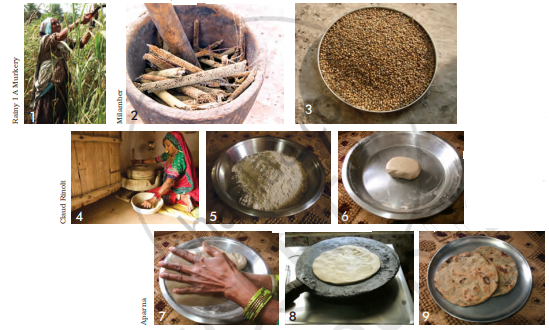Advertisements
Advertisements
Question
The seeds were not sure that what Hasmukh was talking about was really progress. What do you feel?
Solution
I think the seeds were correct in their thinking. A new method of agriculture tends to overexploit the soil and other resources. This leads to loss of fertility of the soil which may result in the land becoming barren. Too much irrigation depletes the groundwater and thus leaves little water for the future. A machine can do the work of many people which leaves many people jobless.
Apparently, it looks like progress, but it is not real progress.
APPEARS IN
RELATED QUESTIONS
Have you eaten roti made from bajra or jowar? Did you like these?
In your house what is done to protect grains and pulses from insects?
Find out about the crops - cereals, vegetables, pulses - that are grown in your area. Of those, is there anything that is famous across the country?
The bajra seed saw differences in the way Damjibhai and Hasmukh did farming (for example, in irrigation, ploughing, etc). What were these differences?
Hasmukh said, “With profits from our fields, we can progress.” What is your understanding of ‘progress’?
What can happen to Hasmukh’s farm after some years?
Damjibhai’s son Hasmukh chose to become a farmer like his father. Hasmukh’s son Paresh is not a farmer, but a truck driver. Why would he have done so?
What questions come to your mind about farmers and farming? Write some questions in your group and ask a farmer. For example, how many crops do they grow in a year? Which crop needs how much water?
Visit a farm near your area. Observe and talk to the people there. Write a report.
What can you see in each picture on the next page?
In picture 2 you can see the bajra cobs in the mortar (okhli, used for crushing). The cobs are crushed with a pestle (moosli) and the seeds are separated from the cob. You can see the separated seeds in picture 3. Now this work is also done by big machines, like threshers. We call both these different ‘technologies’ – using our hands or big machines – to crush the seeds.
What technology could have been used to cut the stem in picture 1? What do you think is being done in the grinder (chakki ) in picture 4? What ways (technologies) would have been used to do the work shown in pictures 5 and 6? You can see that the dough is ready in picture 6. When do you think a sieve (chhalni ) would have been used? Discuss each step in detail, in any language you wish to use.

